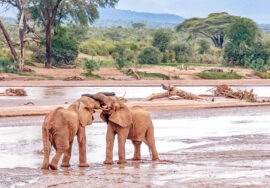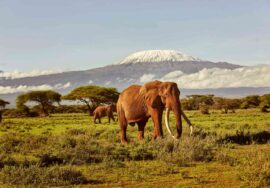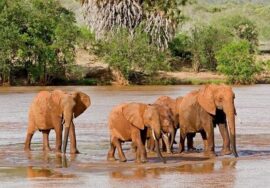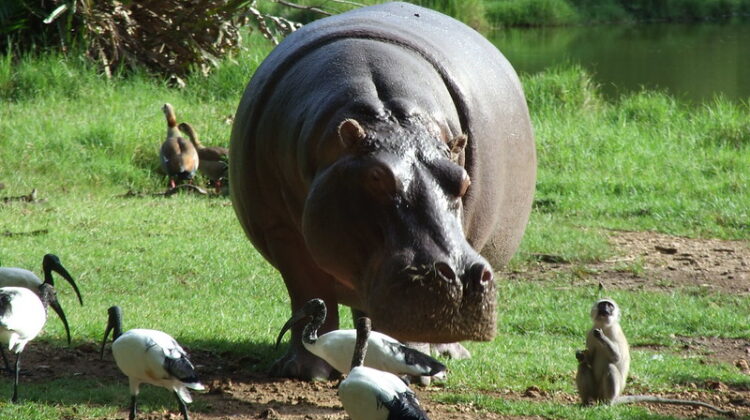
HALLER PARK SANCTUARY
HALLER PARK SANCTUARY, This beautiful place with forests, fields, and ponds has an amazing story behind it. Hippos, giraffes, buffalo, and even crocodiles can be seen up close on a cool walk through this reserve in the city of Mombasa. But if you took away all the plants, animals, and other green things in nature, you would find the remains of an old, empty limestone mine! Even stranger, the mine was still being used forty years ago.
Today, though, you can walk around this park under a thick cover of eucalyptus trees and get close to giraffes at the viewing platform. A walk through these heavily wooded areas will lead you to a wildlife refuge, a reptile park, fish ponds, a relaxing palm garden, and yes, a crocodile pen.
Over 160,000 people visit Haller Park every year. They can walk around at their own pace or go on trips in English, French, German, Italian, or Swahili. People of all ages have loved this wildlife sanctuary for more than 21 years, away from the noise and heat of the city. But how did a quarry wasteland that used to supply cement turn into the lush, healthy ecosystem that people come from all over the world to enjoy?
This story, like many African successes, was about hard work, ability, and working together. In the 1970s, the Portland Cement Company closed down its limestone mine. They wanted to make this damaged land into something better for the community. What happened next was nothing like what they had imagined for their empty pit.
Coming in is Dr. Rene Haller, a Swiss naturalist who has studied plants and other connected sciences. Dr. Haller studied and tried out dozens of different plant types for years, which turned into decades, to find ones that would do well in the poor soil and salty water.
Haller also worked to make the dirt better so that it would be easier for trees to grow again. Over time, a new ecosystem began to take shape. There were more bugs and small animals in the area, which added to the natural mix. Dr. Haller has been able to successfully plant baobab, coconut, date palm, banana, mango, and other types of trees so far.
As work on the new park went on, plans were made to add fishponds, but problems started right away. The fish weren’t doing well for some reason, but Haller remembered an African story that he chose to believe. People said that fish would die if hippos were taken out of some ponds.
Hemiptera’s waste seems to have fed plankton in the water, which gave fish food. The hippos’ action also stirred up the water, which was good for all the living things in it. Based on these traditional stories, Dr. Haller found two hippos: Sally, a loud young female raised by friends, and Potty, a hippos who had been left behind by a moving zoo.
The hippos were moved to the park, made friends right away, and now they can’t live without each other. Just as was said, the fish have also done very well.
The United Nations Environmental Program gave the Park the Global 500 Roll of Honor award for its work in restoring this ecosystem.
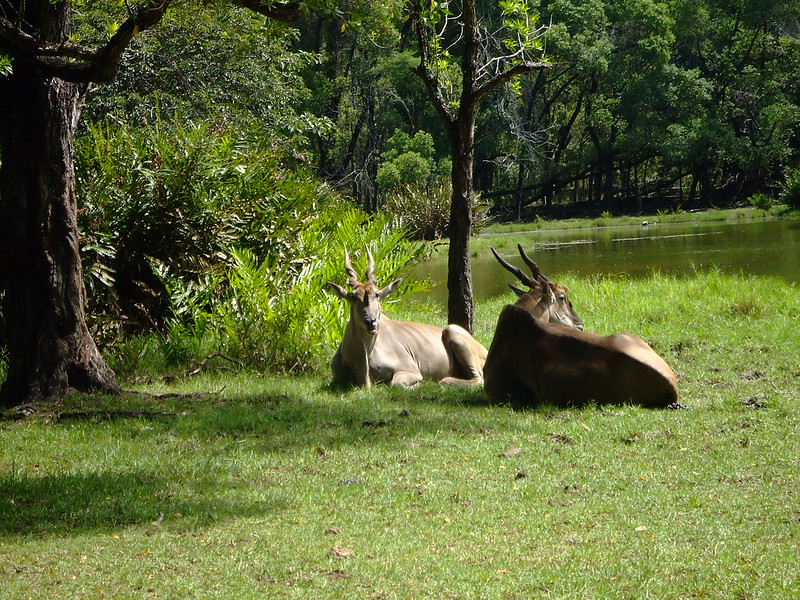
About the Weather at Haller Park: Mombasa has a warm climate, and it rains more in the winter. The coolest month is usually March, when it’s 29oC (82oF) on average.
It is 12 km (7.5 mi) north of Mombasa, a city on the coast of Kenya.
When it’s Open: The Park is open every day from 8:00 am to 7:00 pm, even on weekends and holidays.
The best way to get there is to book a tour in Mombasa with African Safari Kenya.
By air: Moi International Airport is the major airport that serves Mombasa, which is on the coast.
Things to See and Do
Sally and Potty—The popular hippo couple is still making people laugh at the park. Every day at 4:00 pm, you can watch them being fed at the Game Sanctuary.
Crocodiles: This interesting animal was brought to the park in 1975 and has been reproducing well since the 1980s. Crows are fed food that comes from the fishponds.
Night Walks: You might see bushbabies, owls, fireflies, and genets on these walks in the dark.
Observation Platform: From this platform, you can get a good look at the giraffes and even feed them pellets that the guides hand out.
Birdlife: The park is a great place to watch birds. There are many birds to see, such as kingfishers, storks, herons, egrets, owls, eagles, cranes, sandpipers, and more.
Find out about Haller Park Sanctuary
It would have been amazing on its own if this lush park was in a natural setting. But turning an ecological eyesore into such a lush retreat is a credit to Dr. Haller and all the other people who worked hard to make this refuge such a great place to visit.
A yellow butterfly is resting on plants in pots. A huge turtle in the woods In Kenya, two hippos are drinking.
Haller Park with the African Safari Kenya
Haller Park is a great place to spend a day getting close to a wide range of animals with African Safari Kenya.
For your trip to Africa, we offer safaris that leave from Mombasa that go to this and other unique Kenyan parks and sites.

